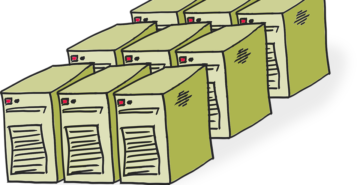As if you didn’t have enough to worry about, patching critical vulnerabilities just got a lot harder.
With 88% of organizations now working from home, IT is scrambling to manage demand on VPNs and other systems while triaging help desk requests from users. With everything going on, it’s easy to fall behind on patching, exposing your organization to greater risk.
But that’s just the start of the trouble. Here’s what you have to look out for and how to fix it.
Why patching is harder when everyone works from home
For a lot of organizations, patching was already a time-consuming, resource-intensive, and inefficient process. Now, with everyone remote, it’s even worse, for three major reasons:
Lack of time and resources. Even in normal times, some companies fail to patch for weeks or even months, often because it’s still a highly manual process. Manual patching eats up a lot of time and resources, not to mention introduces errors and delays. When the workers who normally handle patching are pulled in other directions to support remote work, patching can end up at the bottom of their lengthy to-do list.
Inconvenience and repeated processes. When everything’s in flux, downtime must be minimized at all costs. Since patching requires multiple tasks before and after the actual patch deployment, it is essential to ensure these processes are well streamlined and orchestrated. Furthermore, the often-failed patch deployments require organizations to duplicate efforts and re-run some of those patches cycles again to ensure full compliance. That’s exactly the kind of disruption no company needs right now. As a result, patching might be delayed.
Scattered and unknown systems and applications. With users now scattered, your inventories may no longer be up to date. You might have had to introduce new applications or devices to equip employees to work remotely. You might have outdated legacy IT that’s forgotten about back in the office. With all the different applications involved, keeping systems updated can be complicated, leaving you unsure of what even needs to be patched, let alone priorities.
How to address patching when your workforce is entirely remote
With these challenges in mind, here are four ways you can ensure patching still happens to keep your systems secure.
- Find financial efficiency. In a time like this, keeping costs under control is crucial. Downtime is costly due to potential lost revenues, and/or lost productivity. Designing for high-availability can mitigate some of these costs, but rolling deployments require additional orchestration and cost. The more efficient and cost-effective you can make the patching process, the more likely patching is to happen.
- Automate. By automating the patching process, you ensure it gets done more efficiently and quickly since it doesn’t require nearly as many resources to get done. By handling pre- and post-patching processes, automation ensures the process is smooth while freeing up staff to focus on other issues without sacrificing security.
- Create well-defined and governed processes. To achieve automation, you need a firm grasp of the actions to be taken before and after patching, including change requests, reboots, and other factors. Often when patching doesn’t work, it’s not because of the patch, but because of the process. By clearly defining the steps, you set yourself up for more efficient patching and automation.
- Establish full visibility, even prior to the actual patching. Given the multiple systems, tools, and vendors you likely have in your environment, it’s tough to track the vulnerability remediation cycle across all of them. A better way is to have one view of your patching so you know exactly where you stand across your entire environment rather than having to check a bunch of different applications one by one. The ability to predict patch cycle success and eliminate roadblocks before the actual cycle occurs provides a higher level of success and better compliance with less effort.
Patching is a crucial element of security. But given the burden on IT and security teams as many workers go remote during the COVID-19 pandemic, there’s even less time and fewer resources than normal to get patching done.
Automating the process, unifying visibility down to one pane of glass, and defining processes to maximize efficiency can keep your patching current and your team free to handle the challenges of remote work.



